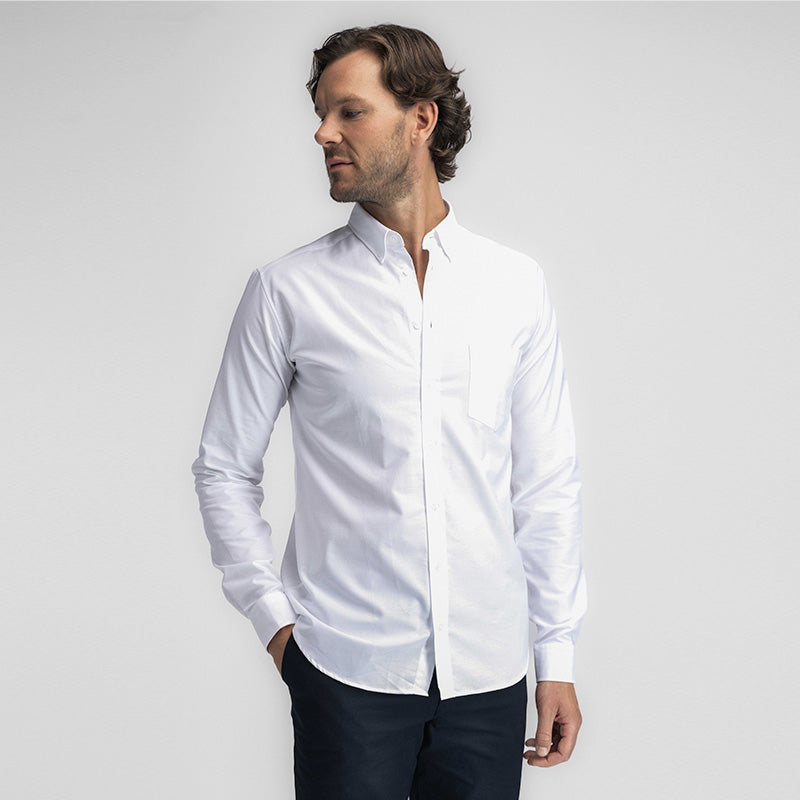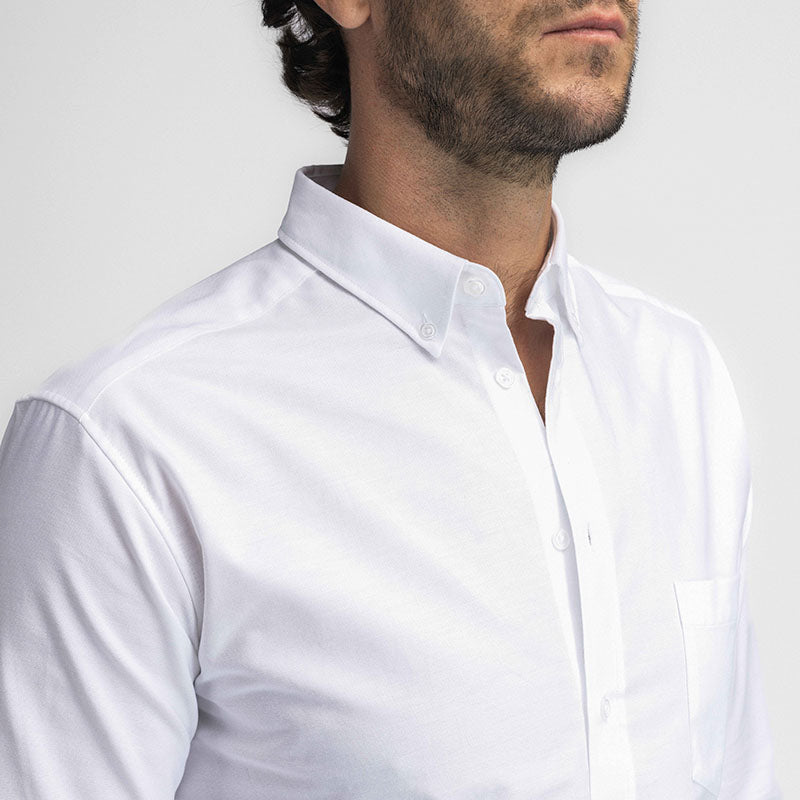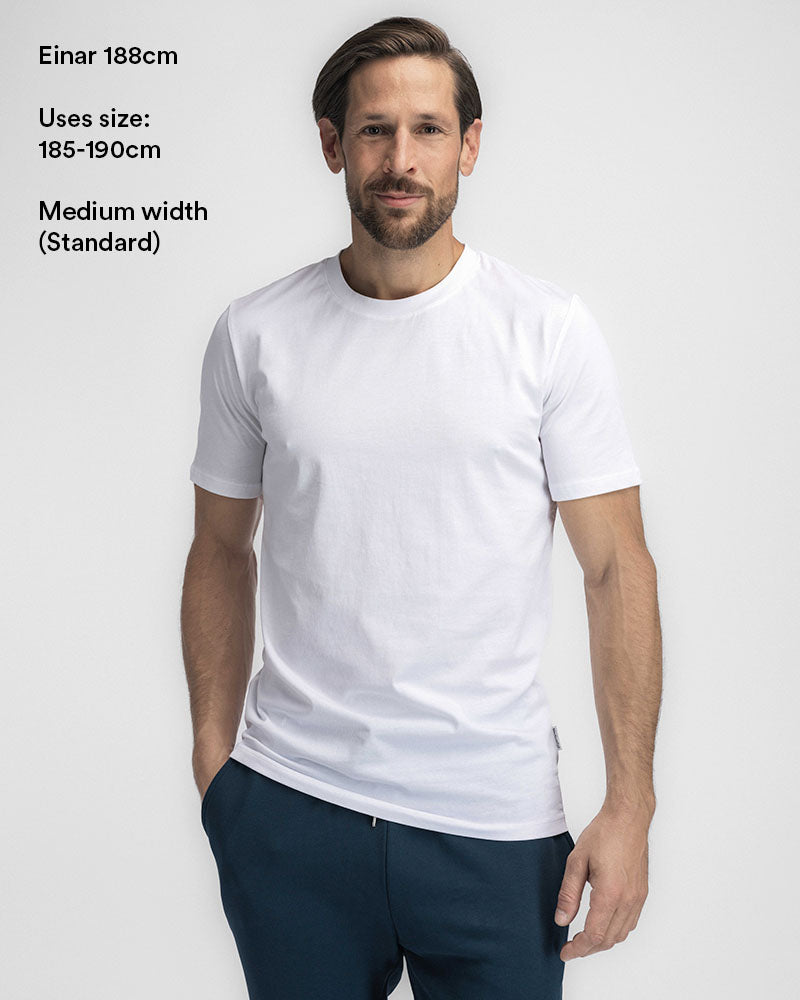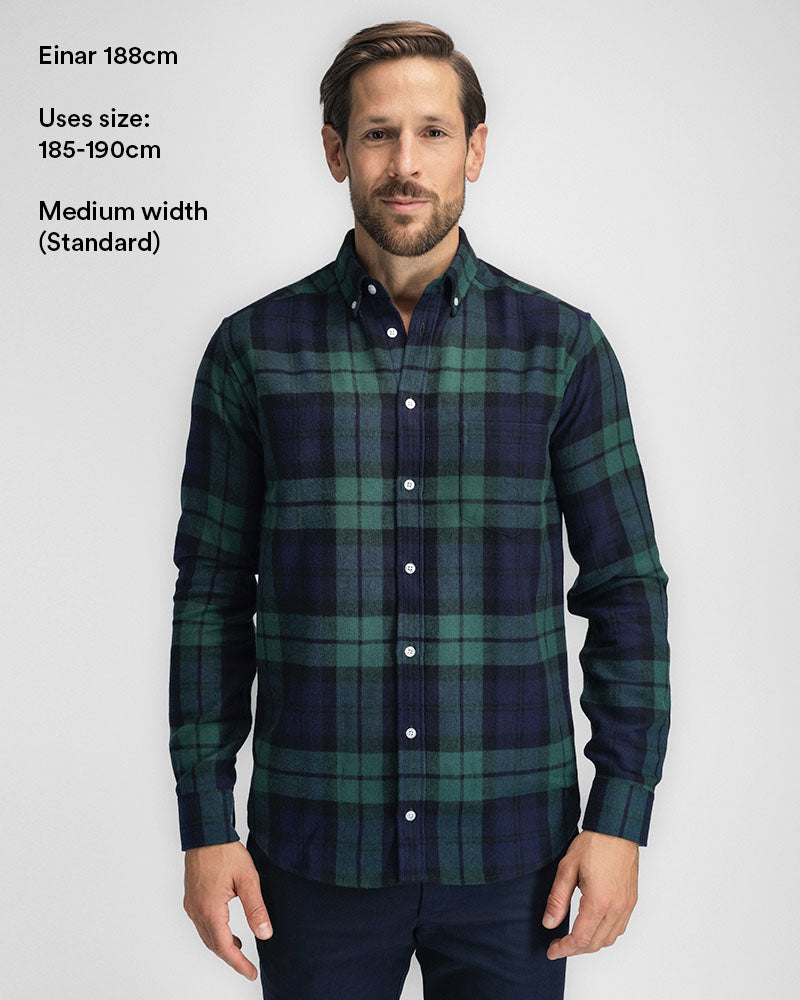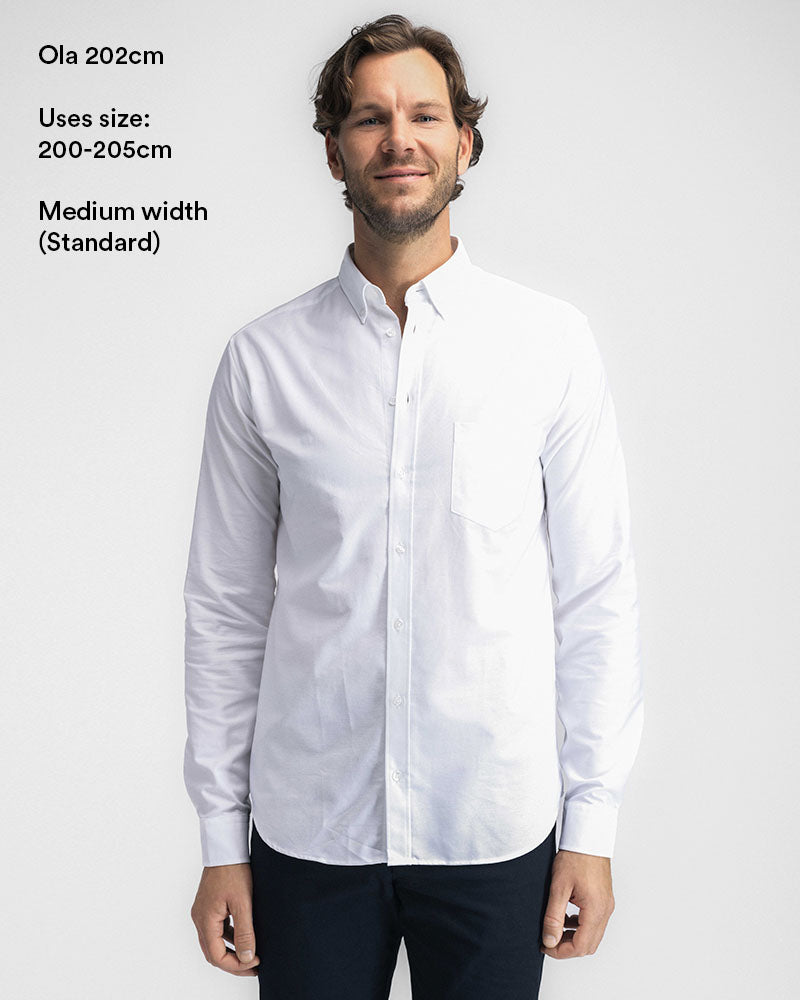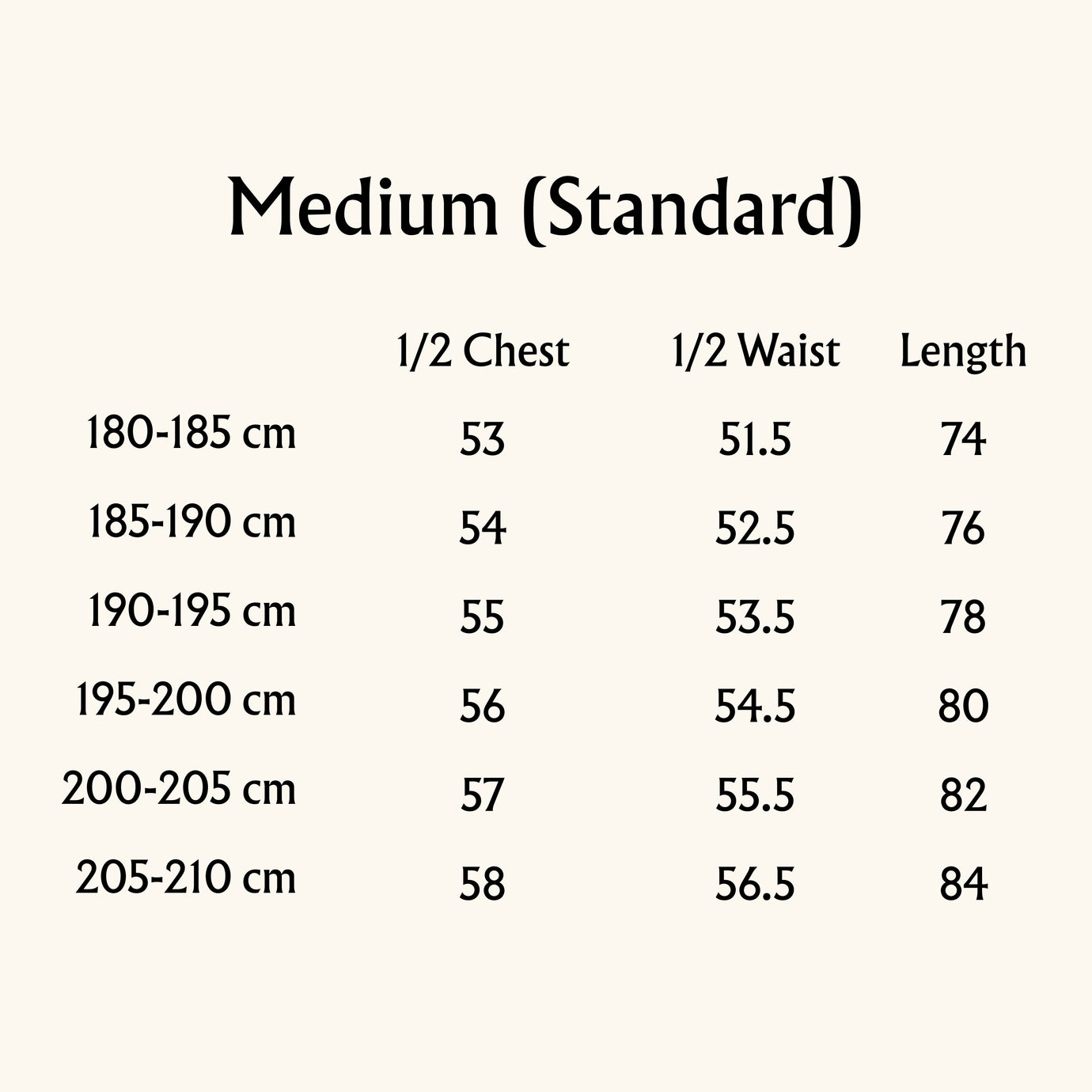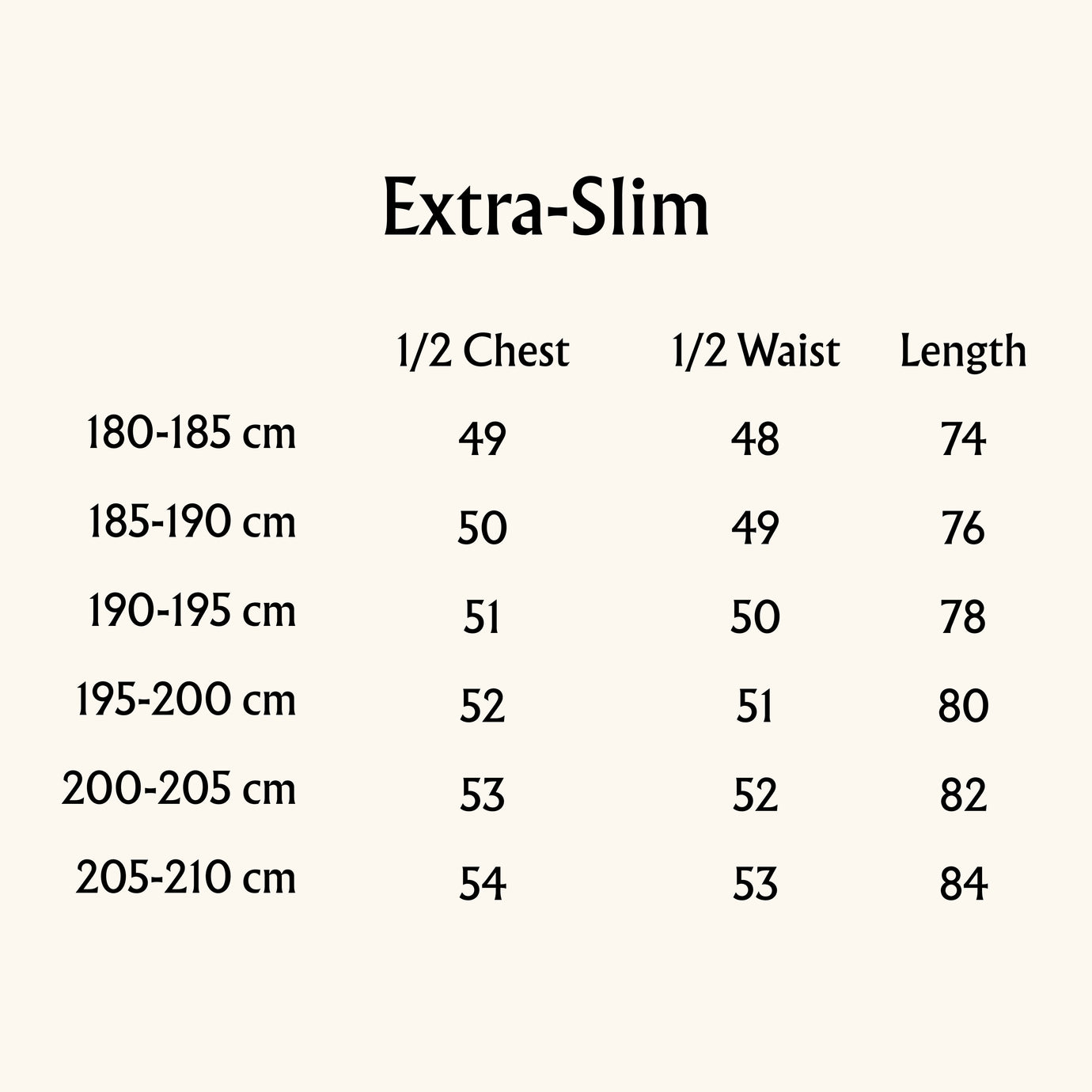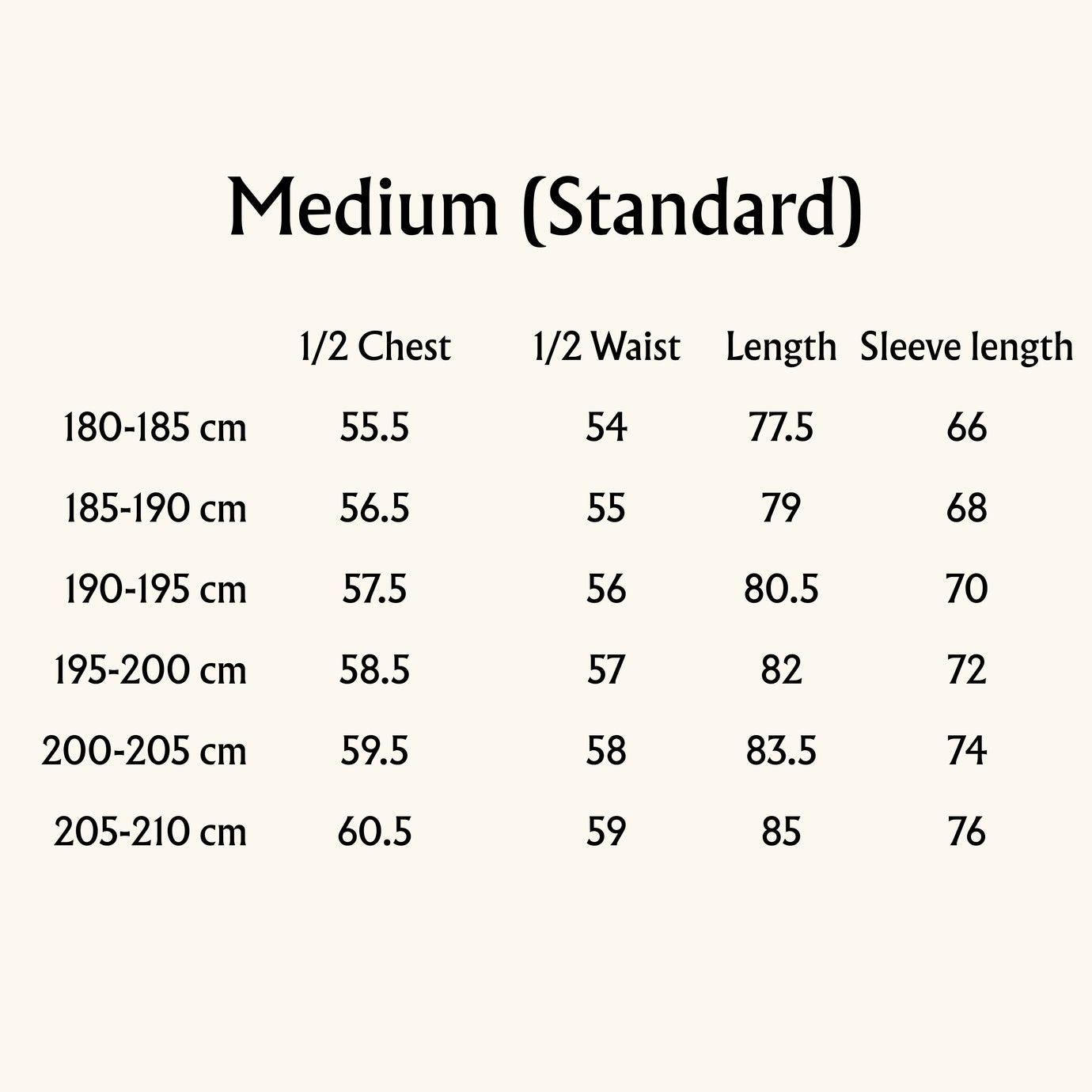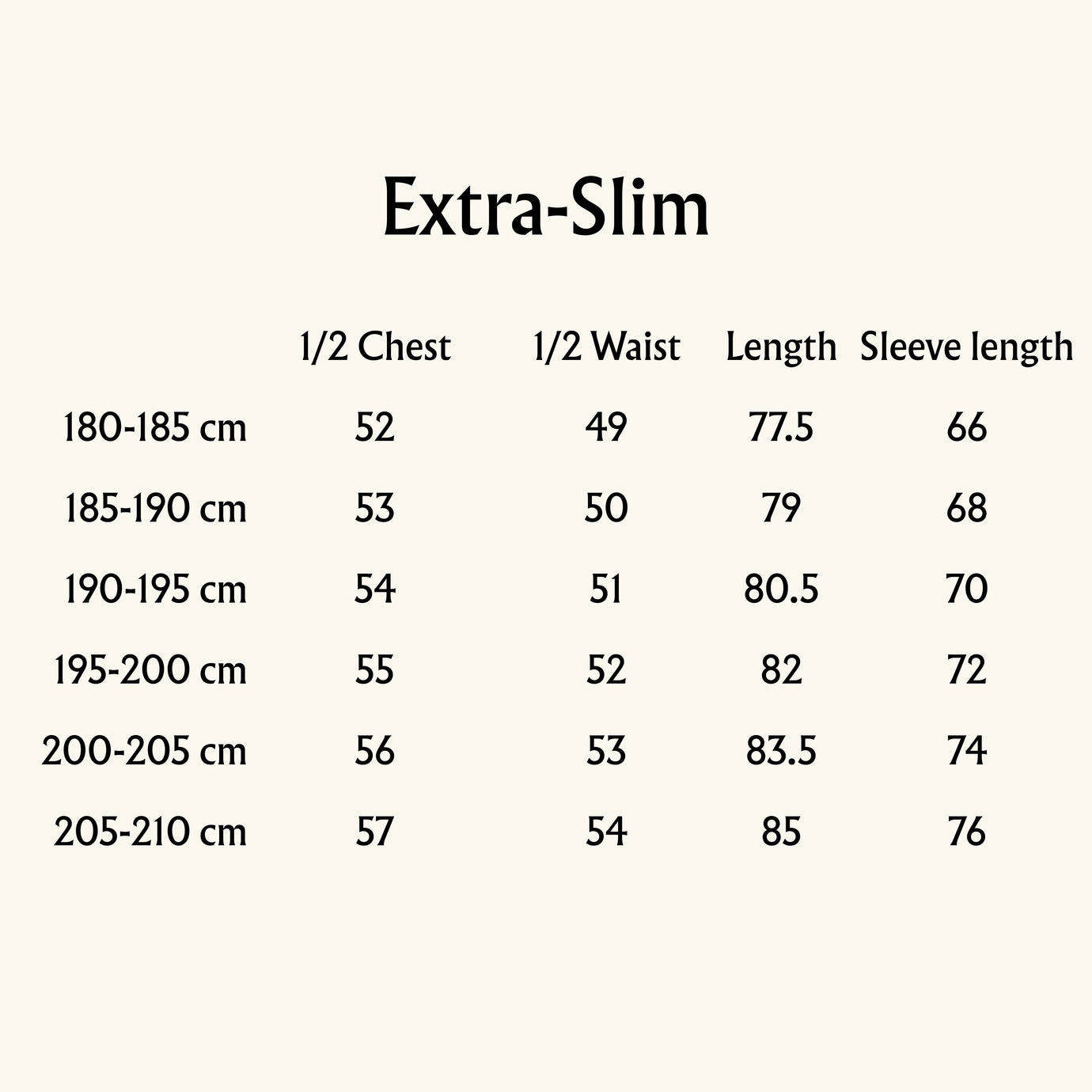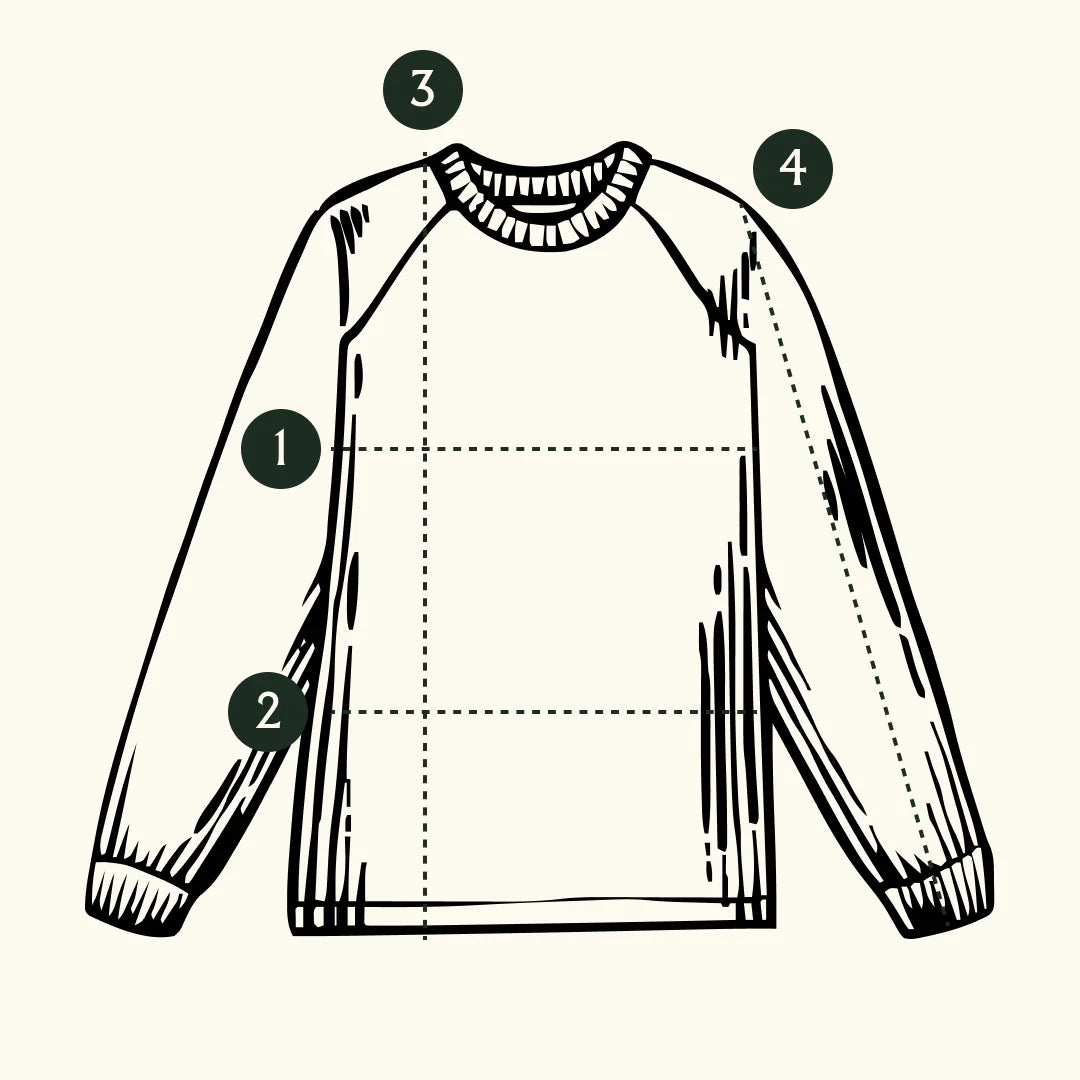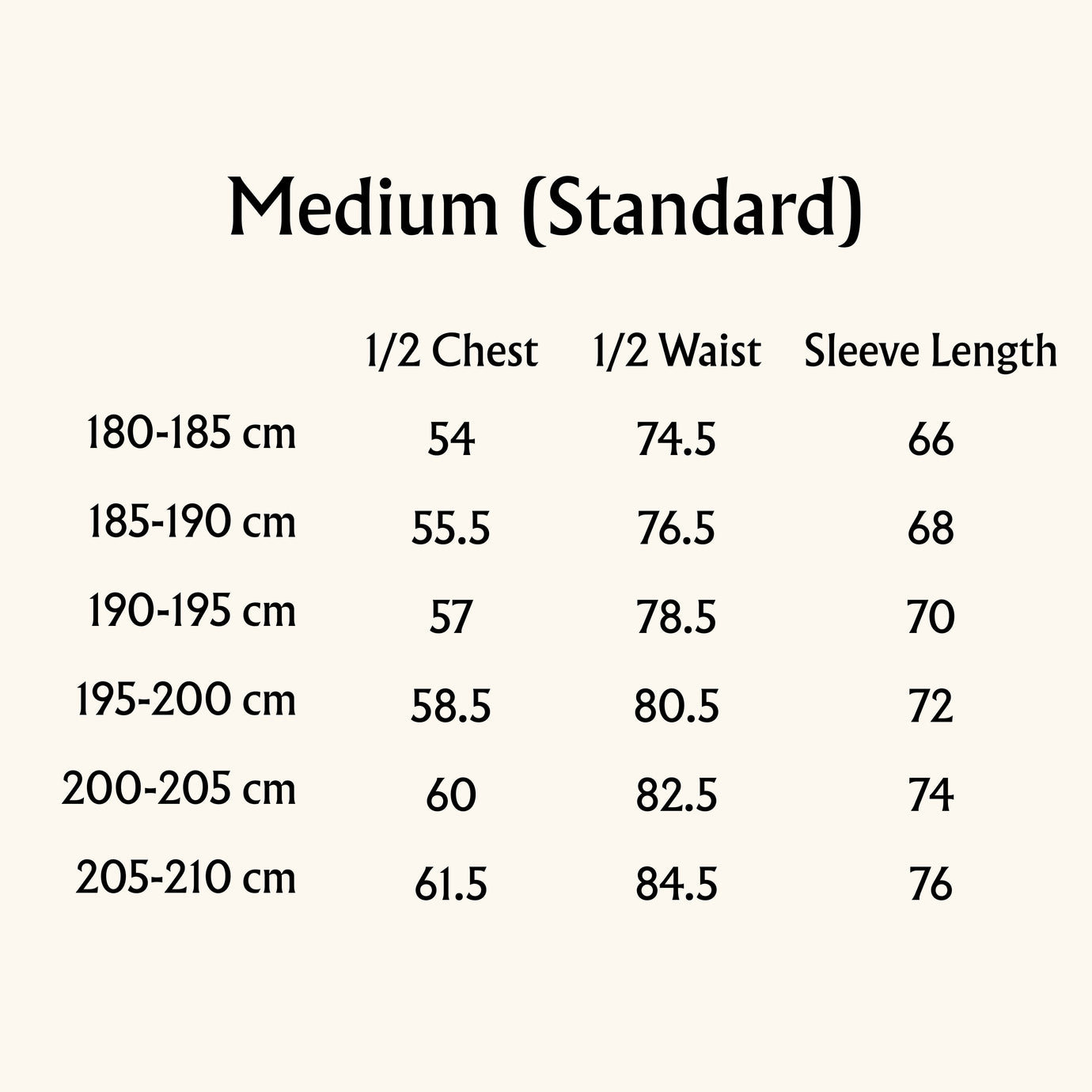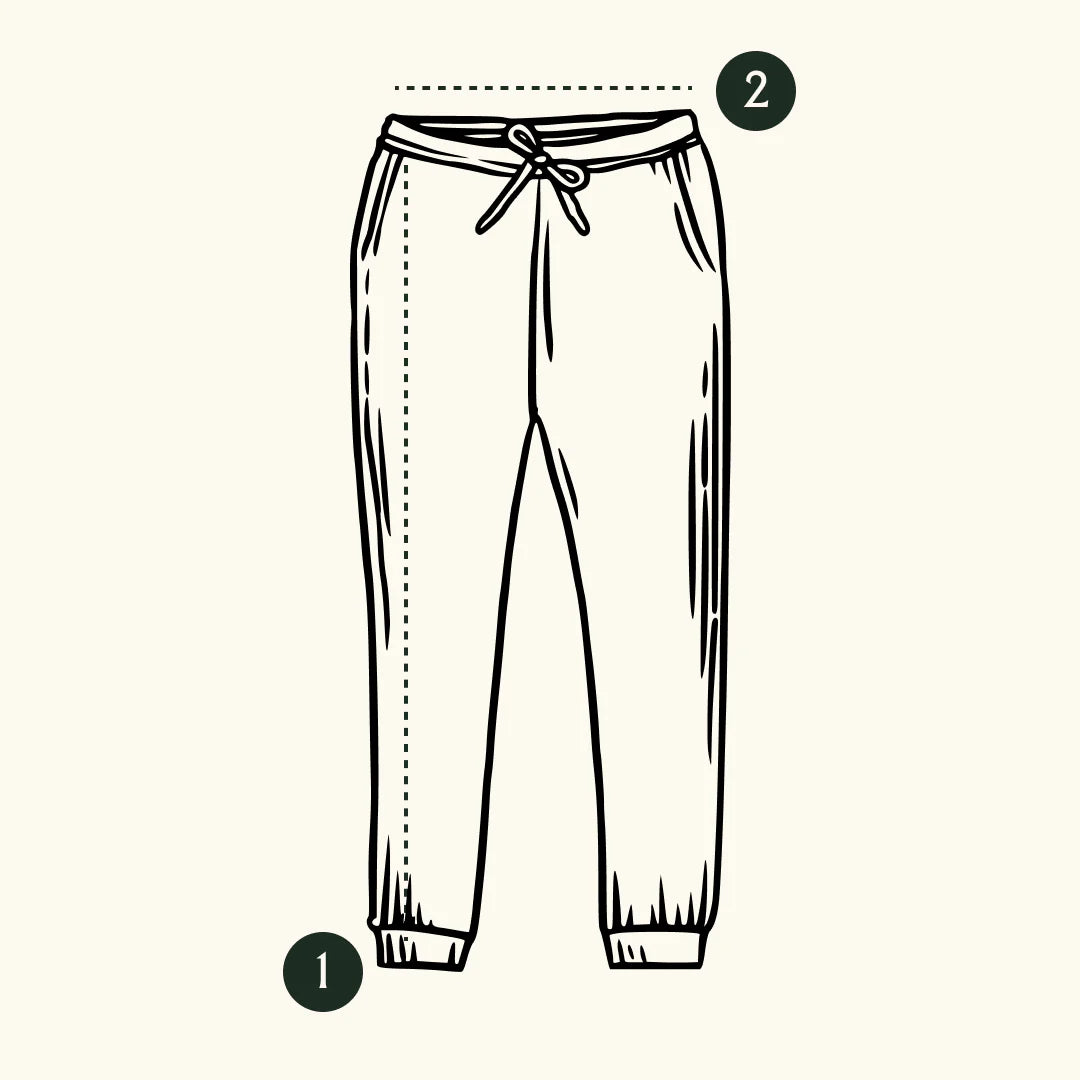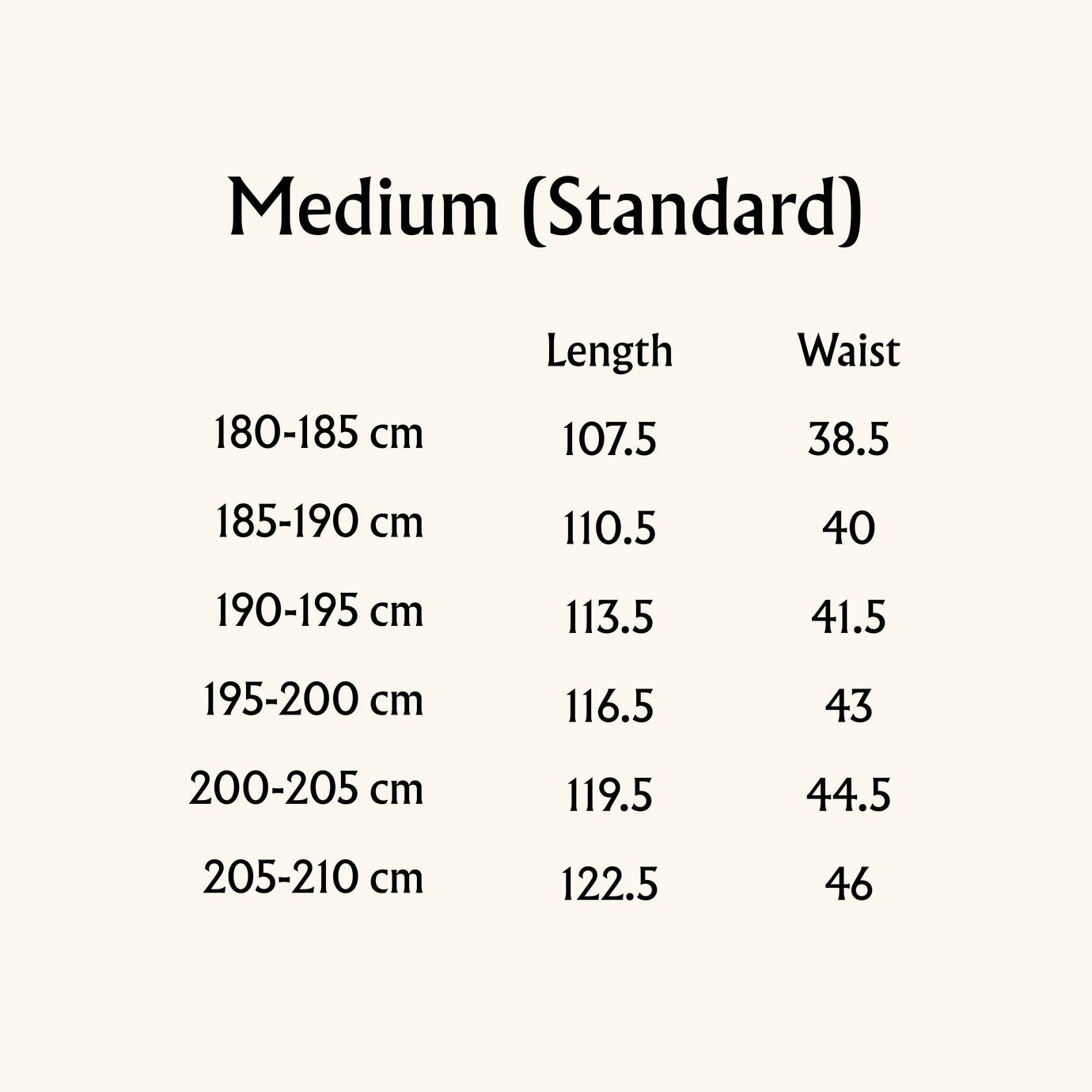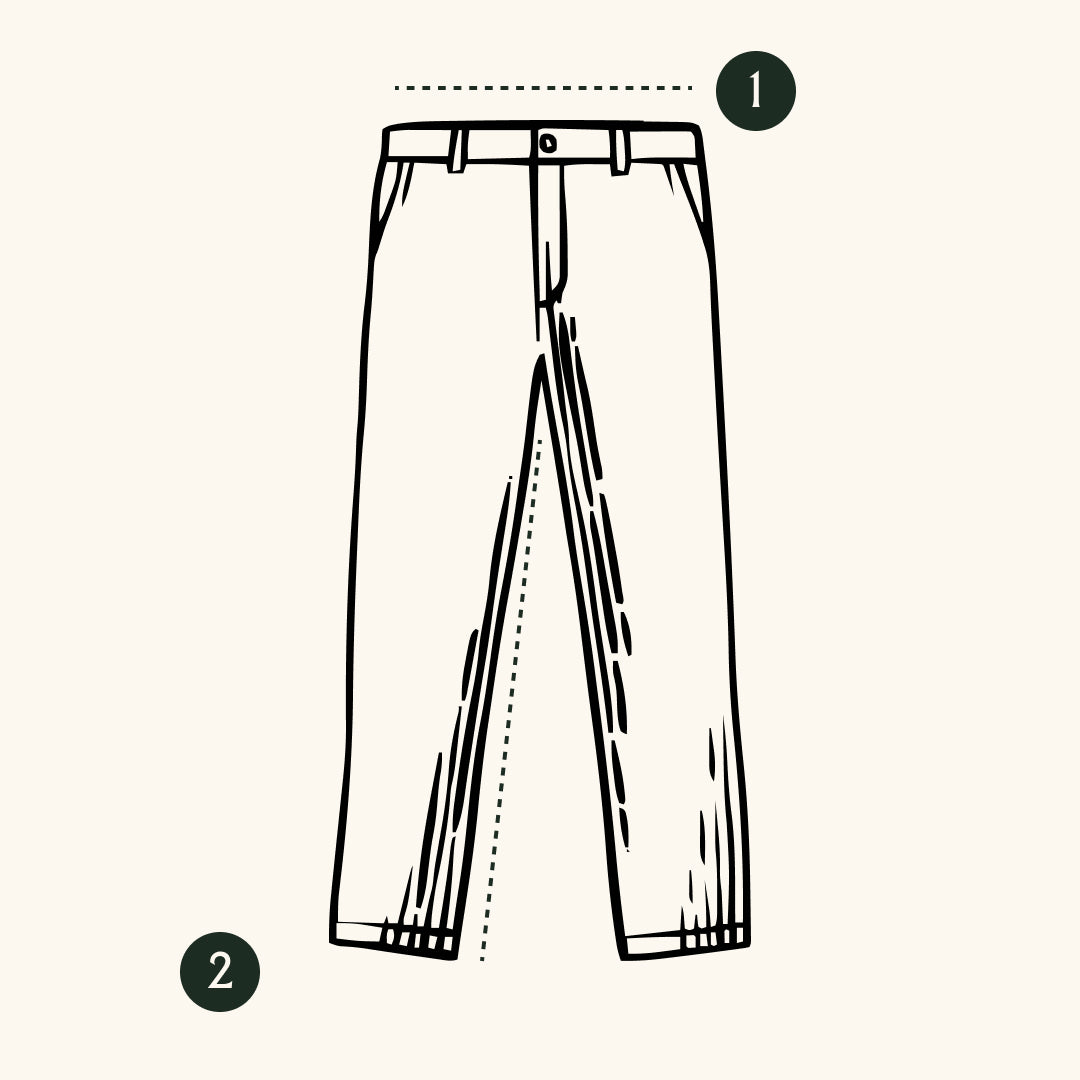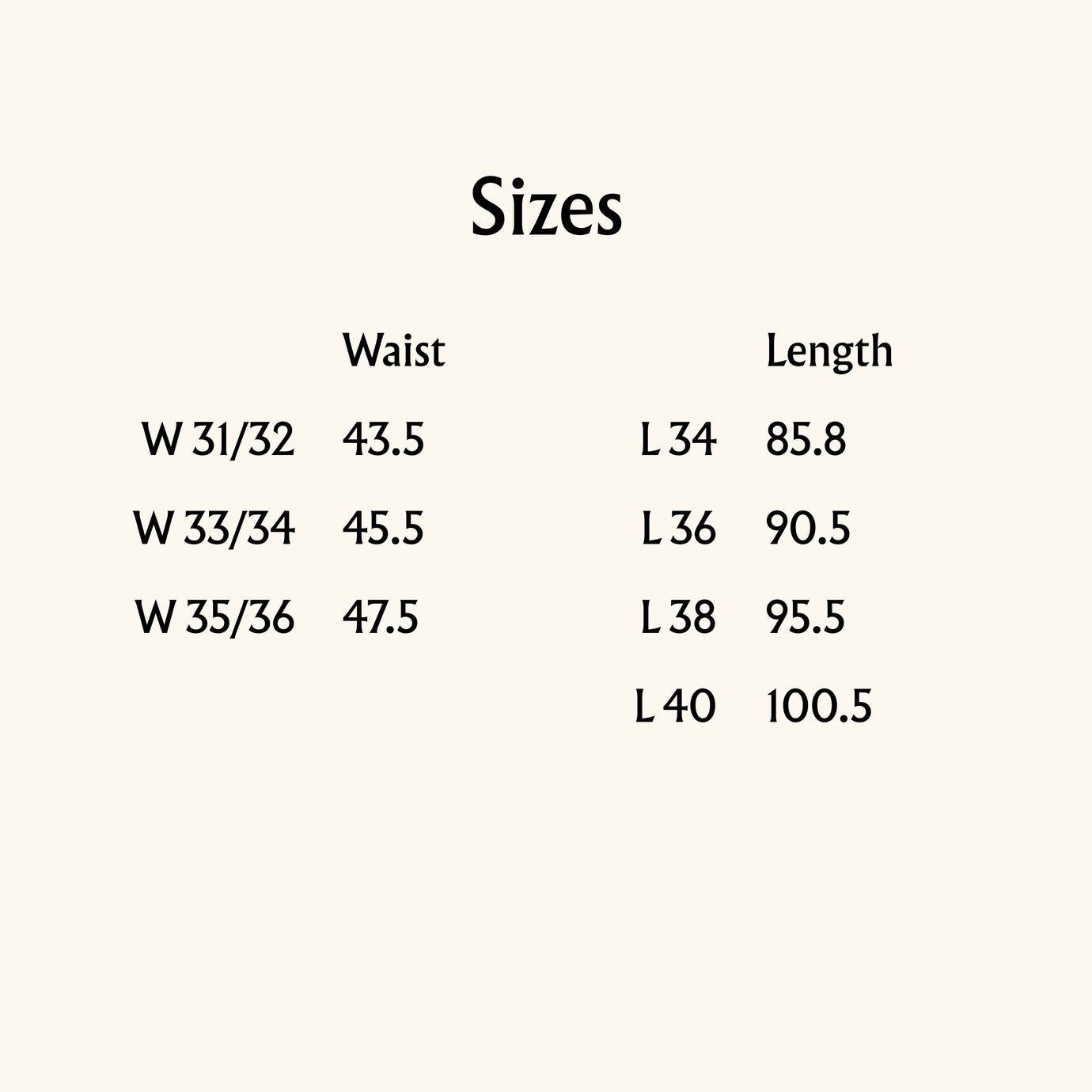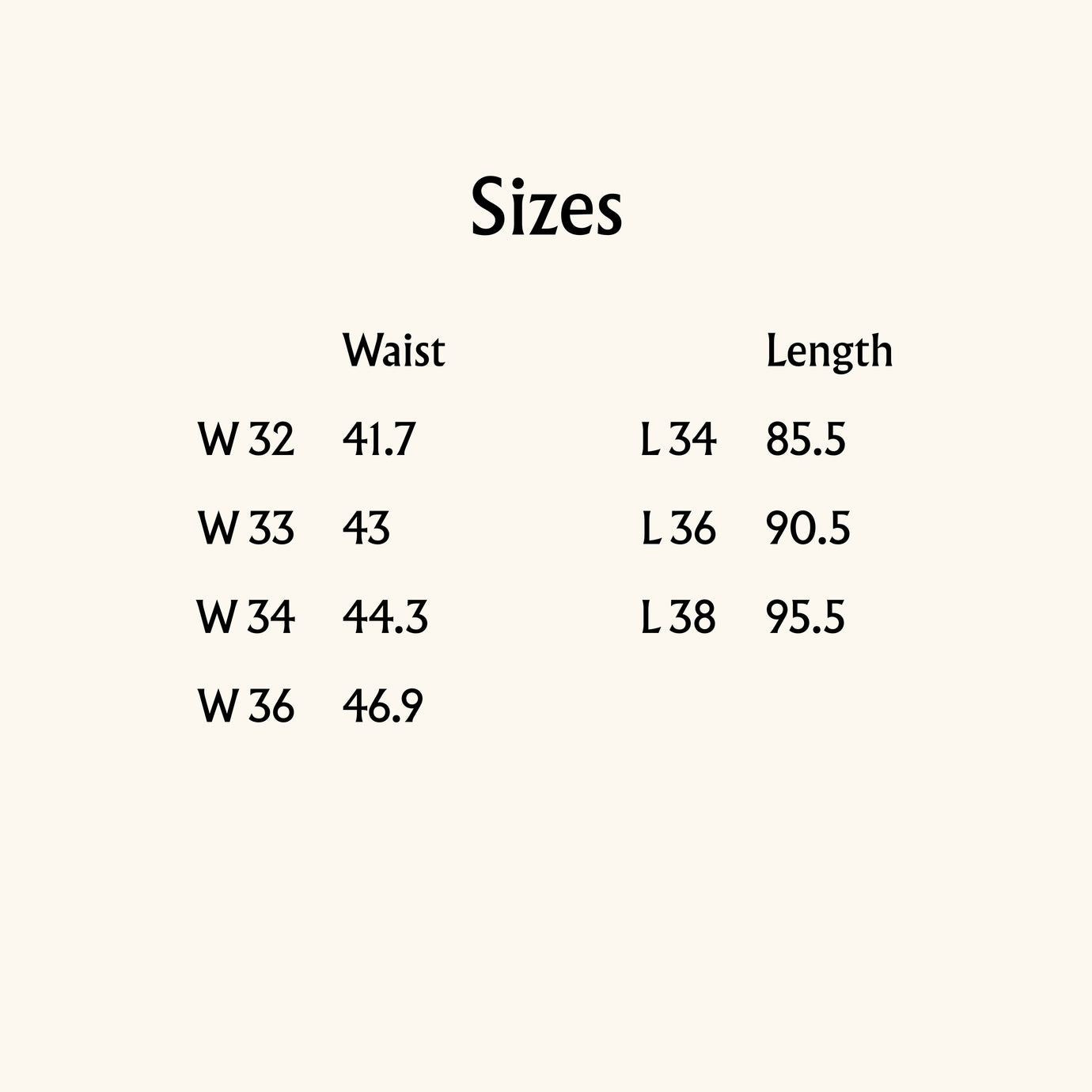Long bodies do not fit into standard sizes. That's why we've opted out of traditional sizing and divided the sizes according to height, so you can easily shop for clothes that fit you perfectly. In this guide you get everything you need to know to choose the right size.
Sizes by height are more accurate
- Our sizes are divided by height, so that it will be easier for you to hit the right one.
- Choose your own height when choosing a size.
- If you are between two sizes, choose up if you want a slightly looser fit and down if you want a tighter fit.
- Medium width is our standard size and is narrow enough, but also suitable for those who do not exercise every day.
- If you are narrower than average or like an extra tight fit, choose extra-slim.
The measurement chart for products can be found at the bottom of the page.
Sizes specially adapted to your height
How it works
- Take your own height as a starting point when choosing a size
- Our standard width (Medium) has a narrow fit, but is also suitable for those who do not exercise every day
- If you are extra slim, we have created a separate width option on some garments that we have called "Extra-Slim". You can find these garments by using the filter on the left side here.
- On garments that do not have a width selection, Medium (standard) applies
- The garments get a little longer for each size - if you are wider than average, or like a slightly looser fit, it is recommended to go up a size to your own height.
- Fit and sizes are constant across products. If you have a garment from MediumTall that fits, you can safely buy the same size in other product categories.
Different models and sizes
Below you will find a selection of models in different heights so you can see how the clothes fit on them.
Einar, 188cm
Einar is 188 cm and uses size 185-190 cm in Standard (Medium) width.
Ola, 202cm
Ola is 202 cm and uses size 200-205 cm in Standard (Medium) width.
Measurement form
- Below you will find a measurement chart for our standard garments. These can be used to compare with a reference garment you have in your wardrobe.
- The measurements in the tables are on the garment itself, so assess for yourself how tight/loose the fit you want in relation to your own body measurements.
- The garment should lie flat when you measure - measurements that go wide therefore show half the circumference.
This is how you measure:
- Chest width: Measure the garment directly under the armpits.
- Length: Measure from the highest point of the garment down.
- Waist: Measure at the narrowest point of the garment - between the bottom of the sleeves and the bottom of the garment.
- Sleeve length: Measure from the shoulder seam to the bottom of the sleeve.
T-shirts
The garment should lie flat when you measure - measurements that go wide therefore show half the circumference.
Shirts
The garment should lie flat when you measure - measurements that go wide therefore show half the circumference.
Sweaters
The garment should lie flat when you measure - measurements that go wide therefore show half the circumference.
Sweatpants
The garment should lie flat when you measure - measurements that go wide therefore show half the circumference.
Chinos 2.0
The garment should lie flat when you measure - measurements that go wide therefore show half the circumference.
Jeans
The garment should lie flat when you measure - measurements that go wide therefore show half the circumference.


